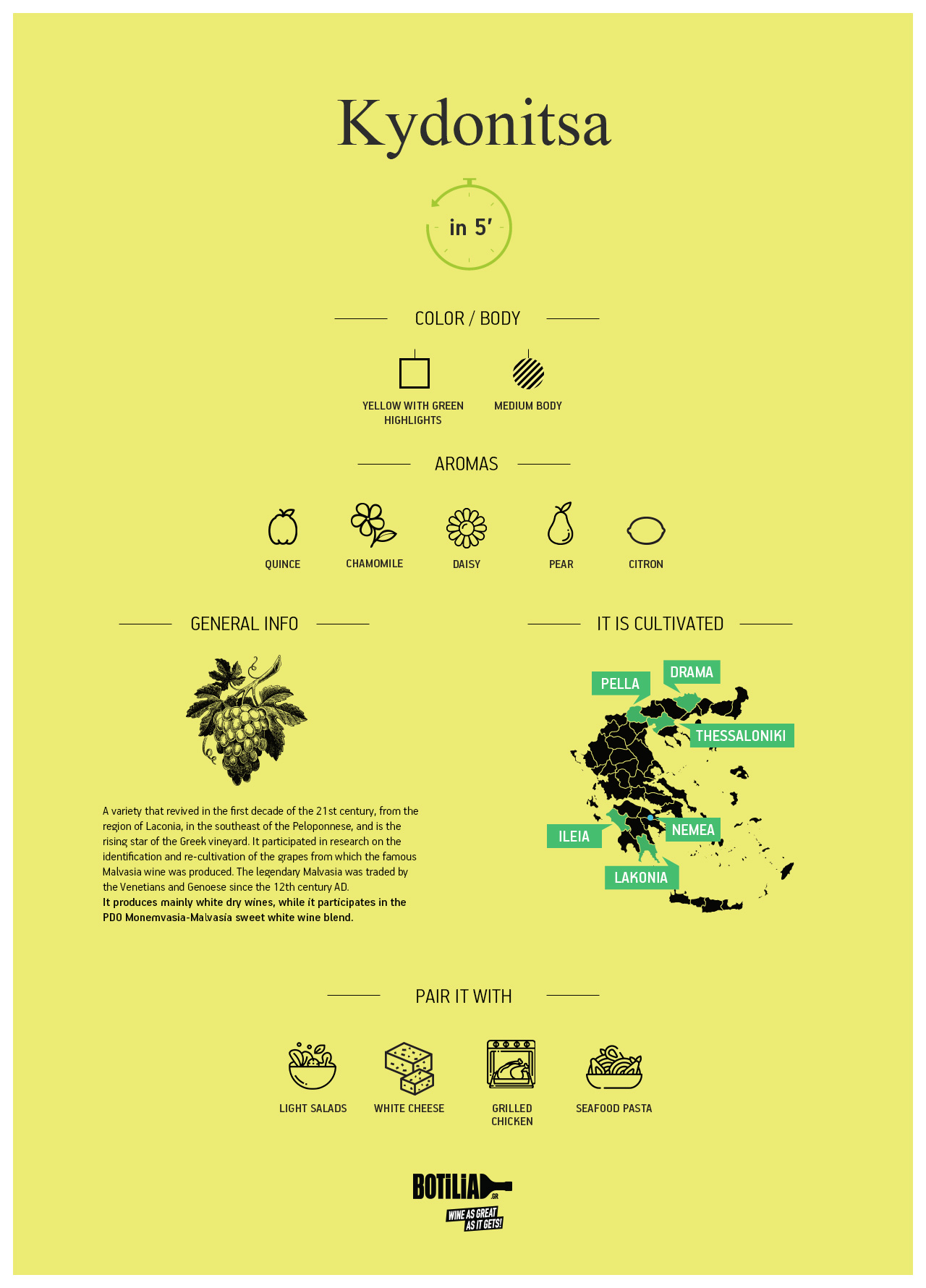KYDONITSA IN 5'

General elements
It is a variety that belongs to the best-known extinct Greek varieties, until recently. It was discovered in the first decade of the 21st century and its birthplace is Laconia. Today, its cultivation has expanded to other areas of the Peloponnese, but mainly in Nemea and Ilia, while we also find it in a few vineyards in Northern Greece. It shows remarkable quality potential and participated in research to identify the grapes from which the most famous wine in history, Malvasia Wine, was made. It produces mainly white dry wines, while it participates in the PDO Monemvasia-Malvasia sweet white wine blend. Lately, it participates in both white and red grape blends.
Characteristics
Kydonitsa gives wines of medium in intensity yellow-green color and intense aromas of quince, pear, and citrus with very elegant botanical notes of chamomile and margarita, while in some wines gives aromas of ripe stone fruits, mainly apricot and nectarine. It has a medium body and medium refreshing acidity, while as a whole it is very delicate and belongs to the aromatic and round wines. Its finesse is also highlighted in the barrel, which gives it a buttery taste and vanilla aroma. It is better consumed fresh and its aging potential is relatively short (3 years), while in specific cases of vinification, it reaches 5-8 years. It is definitely one of the promising white Greek varieties…
Combination with food
Dry white wines from Kydonitsa can accompany excellent, light white meat dishes such as chicken with zucchini, baked chicken with potatoes, and turkey rolls with vegetables. It also pairs well with seafood and fish dishes such as seafood barley, and linguine alle vongole. In more simple cooking, a cool salad with tabbouleh or a platter of white cheese is ideal. Finally, the more exuberant versions call for fatty fish like grilled salmon.
Christina Tsogka


